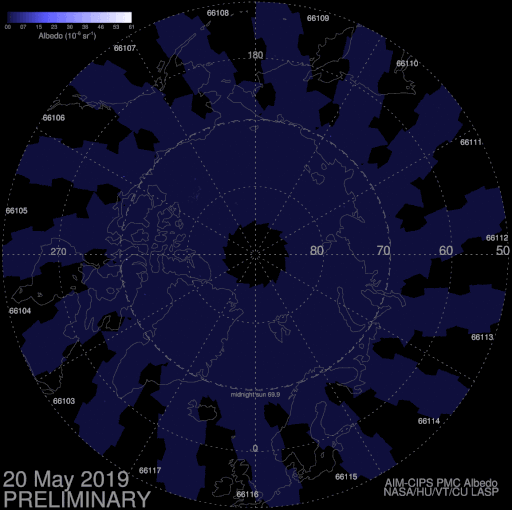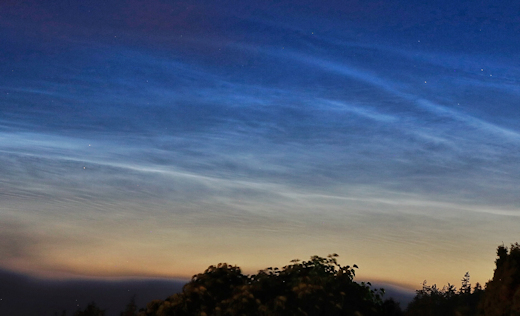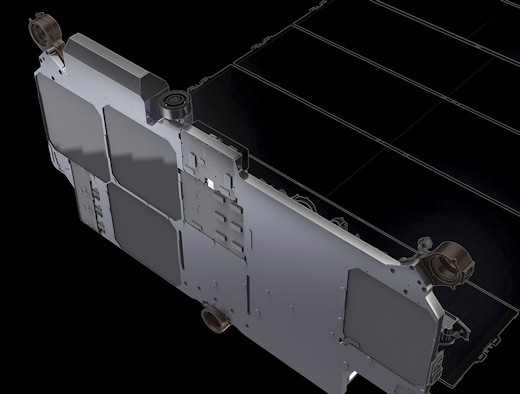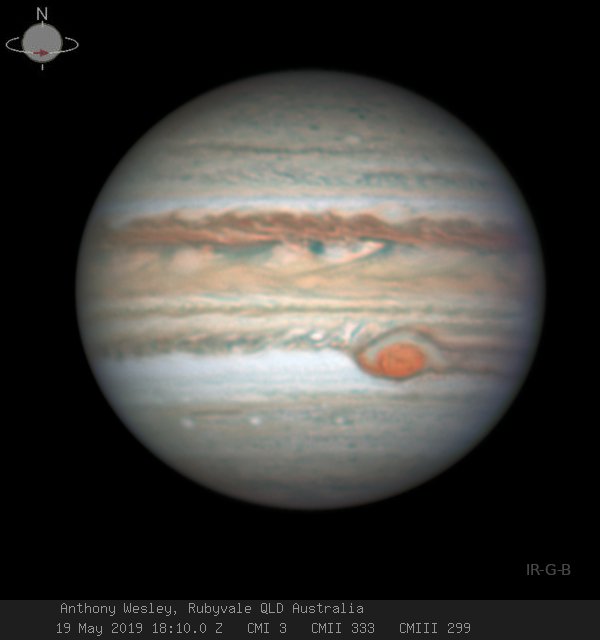May 31, 2019: A huge blue cloud of frosted meteor smoke is pinwheeling around the Arctic Circle. NASA’s AIM spacecraft spotted its formation on May 20th, and it has since circled the North Pole one and a half times, expanding in size more than 200-fold.
“These are noctilucent clouds,” says Cora Randall of the AIM science team at the University of Colorado. “And they are going strong.”

Noctilucent clouds (NLCs) in May are nothing unusual. They form every year around this time when the first wisps of summertime water vapor rise to the top of Earth’s atmosphere. Molecules of H2O adhere to specks of meteor smoke, forming ice crystals 80 km above Earth’s surface. When sunbeams hit those crystals, they glow electric-blue.
But these NLCs are different. They’re unusually strong and congregated in a coherent spinning mass, instead of spreading as usual all across the polar cap.
“This is most likely a sign of planetary wave activity,” says Randall.
Planetary waves are enormous ripples of temperature and pressure that form in Earth’s atmosphere in response to Coriolis forces. They are responsible in part for undulations in the jet stream and can have a major influence on global weather. All rotating planets with atmospheres have these kind of waves.
Data from NASA’s Microwave Limb Sounder (MLS) instruments show that, indeed, a planetary wave is circling the North Pole:

“The region of coldest temperatures migrates clockwise around the hemisphere, making one complete lap in about 5 days,” notes Lynn Harvey of the AIM science team who processed the data. “This is where the NLCs are forming.”
Because of planetary wave activity, the 2019 season is shaping up to be unusually good. The clouds have already made an appearance in the USA–something that usually doesn’t happen until late June or July.
“Last night, I took my dog out an hour and twenty minutes after sunset and was happily surprised to see these noctilucent clouds,” reports Shelley Johnson of Anacortes, Washington, who took this picture on May 30th:

NLCs have also been sighted in Europe–highlighted by a bright display in Germany. “This is my earliest observation of noctilucent clouds and, considering the fact that it’s only May, they were exceptionally bright and well structured,” reports Laura Kranich of Kiel, Germany. “Seems like this is going to become a great season!”
If the 2019 NLC season continues to develop this quickly, even mid-latitude observers may soon be seeing this polar phenomenon. Observing tips: Look west 30 to 60 minutes after sunset when the sun has dipped below the horizon. If you see luminous blue-white tendrils spreading across the sky, you may have spotted a noctilucent cloud.
Realtime Noctilucent Cloud Photo Gallery














